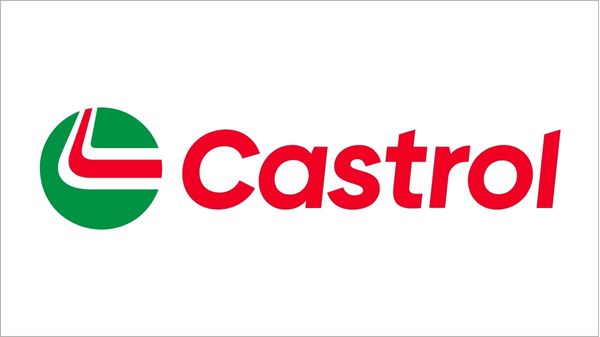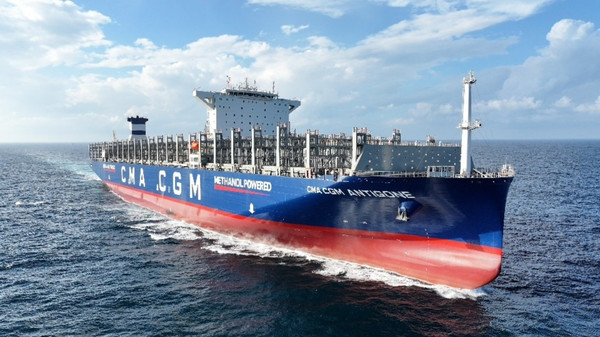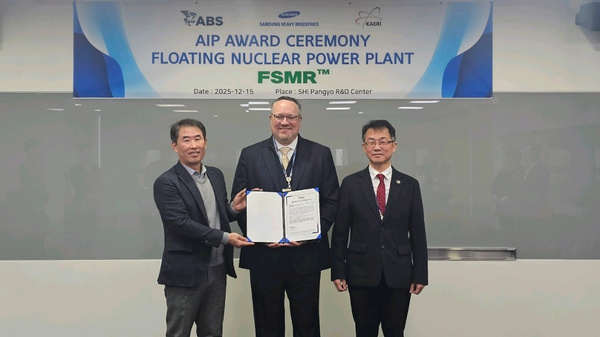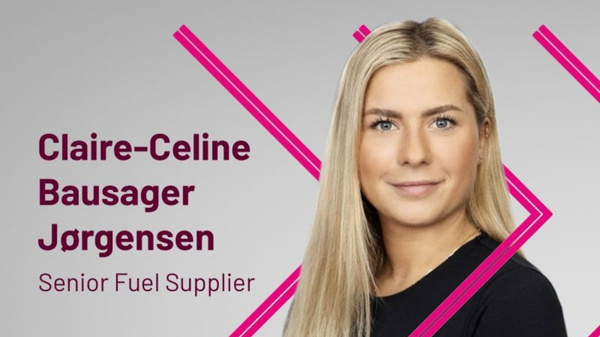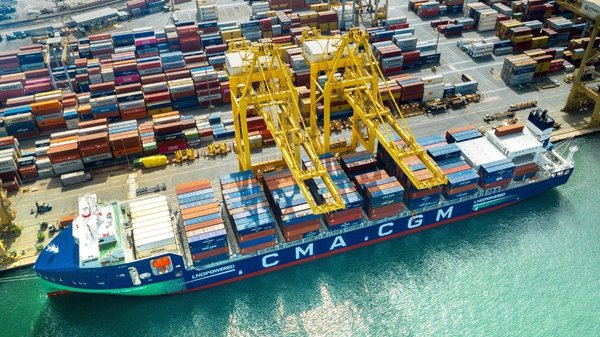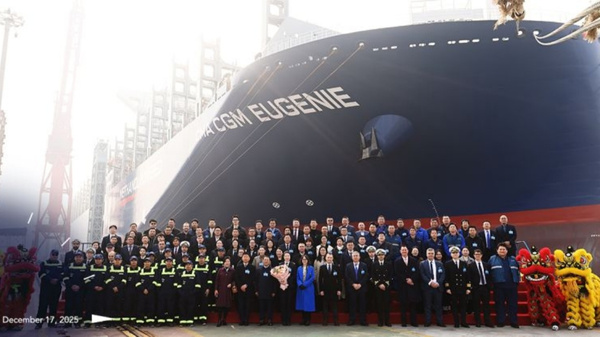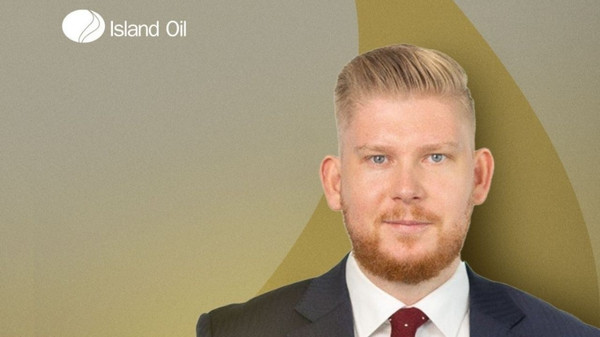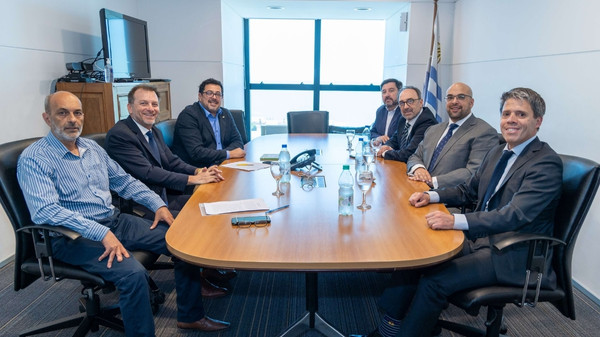Overall confidence levels in the shipping industry held firm over the three-month period to August 2013, maintaining the highest level reached since November 2010, according to the latest Shipping Confidence Survey from international accountant and shipping adviser Moore Stephens. Doubts persist, however, over the level of excess tonnage and the resultant effect on freight rates, while there is growing concern over the increasing cost of regulation.
In August 2013, the average confidence level expressed by respondents in the markets in which they operate was 5.9 on a scale of 1 (low) to 10 (high), identical to the figure recorded in the previous survey in May 2013. This is the highest figure since the 6.0 recorded in November 2010. The survey was launched in May 2008 with a then confidence rating of 6.8.
Charterers’ confidence reached a three-year high, up from 5.5 to 6.3, equalling the all-time survey high for charterers. Confidence was also up for owners, from 5.7 to 5.8, the highest figure since May 2011, and for managers, from 6.0 to 6.2. Confidence on the part of brokers remained unchanged at 5.9. Geographically, confidence was up in both Asia (from 5.8 to 6.1) and Europe (from 5.8 to 5.9), and unchanged in North America at 6.0.
There was a theme of quietly returning confidence running through the comments of a number of respondents. “There is a feeling of optimism and the sense that we have turned a corner, with supply and demand expected to come into balance,” said one respondent.” Another noted, “The market is waking up, and more opportunities will appear in the near future,” and another still that, “The shipping market is very competitive and constantly evolving, with more and more new players entering the industry as the demand for shipping cargo by sea continues to increase.
Elsewhere it was noted, “The shipping industry is seemingly moving towards a positive place, albeit slowly,” and, “The shipping market is on the rise, and will continue on that path.” One respondent said, “A shrinking orderbook, combined with the anticipated US and European economic recovery, should help to increase demand in 2014.”
Not everybody was so confident, however, with one respondent going so far as to say, “We have never known a period in shipping where the uncertainty factor has been so high in so many areas.” Another said, “Looking at the moves of some of the major players, we have to ask whether we are all blind or just plain ignorant. The rest of us will be paying for a handful of greedy CEOs who hide behind their number-crunchers who make everything look bright and shiny.”
Another respondent observed, “Some niche markets are showing definite signs of a boom, but others are still in decline. Any overall recovery is still at least another two years away. Managing to survive the last five years is no guarantee that a company will survive the next five.” Elsewhere it was noted that the abiding message must be, “Consolidate, consolidate, consolidate!”
A number of respondents expressed continuing concern about overcapacity. “Our biggest fear,” said one, “is that the financial markets will enter the shipping sector and start ordering new vessels again before moderate growth and scrapping volumes have had time to absorb excess tonnage.” Another said, “We are already worrying about the market from 2016 onwards because too many newbuilding orders are being placed on pure spec.”
One respondent said, “A lot of companies and investment funds seem to have the money and courage to invest again in new orders because they see that building prices have bottomed out. But we already have a serious problem with oversupply in all sectors and all tonnage sizes which will certainly not be solved by the time those new ships now being ordered will be ready to enter service.”
A number of respondents referenced the debilitating effect of overtonnaging on freight rates. “Freight rates need to rise,” said one, “but this will not happen while the supply of ships exceeds demand.” Another emphasised, “Freight rates cannot go up unless more ships are scrapped. Newbuilding should be stopped for a specified period, and the supply of easy cash should be regulated.”
v
A variety of regulatory issues were meanwhile high on the agenda of a number of respondents. One warned, “Regulatory issues will be coming to a head over the next 18 to 24 months which could require major capital investment to allow shipowners simply to stay in business.” Another emphasised, “Ballast water management requires huge investment which could force a lot of ships into the breakers’ yards,” while another still said, “Current high fuel costs will be significantly compounded by low-sulphur regulatory requirements from 2015 onwards.” One respondent complained, “Rules and regulations are forcibly implemented without consideration for the profit margins of the shipping industry, which affects the fortunes of all parties, including shipbuilders.”
Finance was uppermost in the minds of many respondents. “The shipping banks need to be more active and lend money on secondhand ships at affordable rates,” said one, while another noted, “Finance remains tight for all asset classes.” At the other end of the scale, meanwhile, was the respondent who observed, “We are worried about the huge amount of cash available for newbuildings.” Elsewhere, too, it was noted, “The latest fiasco of newbuilding ordering via IPOs and equity funds is an obstacle on the road to market recovery unless the scrap market can be accelerated to speed up the exit of older tonnage, resulting in demand overtaking supply.”
“High asset values combined with high financing costs will not allow owners to survive for very long unless demand strengthens,” said one respondent, while another expressed “concern about the potential actions of hedge and vulture funds acquiring debt from banks which have exited the market.” But another felt that, “Management of the debt position has been much more measured and calmer than in previous downturns, with less resort to fire-sale tactics, and this may facilitate a return to more normal conditions.”
The role of China in the fortunes of the shipping industry continued to exercise the minds of a number of respondents. “Any significant slowdown in the Chinese economy will have a negative effect on shipping markets,” said one, “although the massive economies of the US and Europe may be coming off lows, so there is potential there.” Another emphasised, “The number of new orders and deliveries in the dry bulk sector will lead to over-supply, and any disturbance in the demand for cargo by China will create a difficult market situation.” Yet another respondent, however, felt that demand for imported bulk cargoes in China was “insatiable.”
The likelihood of respondents making a major investment or significant development over the next 12 months was down marginally on the previous survey, on a scale of 1 to 10, from 5.6 to 5.5, which is still the second-highest figure recorded in the past two and a half years. Charterers were the most confident category of respondent in this regard, up from 6.0 to 6.7, while owners (up one point to 5.8) were also more optimistic this time. Managers, down from 6.0 to 5.8, and brokers, down from 5.2 to 5.1, were of a different mind.
The percentage of charterers who assessed the likelihood of their making an investment at 7.0 out of 10.0 or higher was up by 25 percentage points to 72 per cent, while the number of owners who thought likewise was up by 2 percentage points from 45 per cent to 47 per cent. Meanwhile, the number of managers rating the likelihood of making a new investment over the next 12 months at 7.0 out of 10.0, or higher, was unchanged at 45 per cent.
Geographically, expectation levels of major investments in both Asia and Europe were unchanged at 5.5 and 5.6 respectively, while in North America they were down from 5.9 to 5.0.
One respondent noted, “This is the right time to pick up assets as prices are at low levels, and anyone with funding should opt to buy new fuel-efficient tonnage, at the lowest price levels.” Another said, “In spite of overall difficulties there are niche opportunities to be explored.”
Demand trends, competition and finance costs once again featured as the top three factors cited by respondents overall as those likely to influence performance most significantly over the coming 12 months. The overall numbers for demand trends were up 2 percentage points to 24 per cent, down 1 percentage point for competition at 19 per cent, and unchanged in the case of finance costs at 16 per cent. Tonnage supply (up 1 percentage point to 13 per cent) featured in fourth place, ahead of fuel costs (static at 10 per cent) and operating costs (down 2 percentage points to 9 per cent).
Demand trends remained the number one performance-affecting factor for owners, up by 4 percentage points to 25 per cent. Tonnage supply featured in second place at 15 per cent, down 1 percentage point, followed by finance costs, again down 1 percentage point to 14 per cent. For managers, meanwhile, competition, up 2 percentage points to 20 per cent, featured in first place, with finance costs (also up 2 percentage points, to 18 per cent) overtaking demand trends (down 3 percentage points to 15 per cent) in second place. For charterers, demand trends, up by 9 percentage points to 33 per cent, featured in first place, ahead of competition (up 3 percentage points to 20 per cent), and tonnage supply.
Geographically, demand trends were the most significant factor for respondents in both Asia and Europe (unchanged at 23 per cent in Asia and up by 2 percentage points in Europe to 24 per cent). Competition and finance costs, in that order, made up the top three performance-affecting factors in both Asia and Europe. In North America, meanwhile, demand trends (up by 6 percentage points to 32 per cent) displaced competition (down from 28 per cent to 24 per cent) in first place, with operating costs (up by 2 percentage points to 13 per cent) in third place.
There was a 4 percentage-point increase (from 37 per cent to 41 per cent) in the number of respondents overall who expected finance costs to increase over the next 12 months. The number of respondents expecting finance costs to come down, meanwhile, remained unchanged at its highest figure (11 per cent) since November 2010. Charterers were the only main category to record a fall in the numbers of respondents expecting an increase in finance costs (down from 50 per cent to 38 per cent). The figure for owners was up from 32 per cent to 36 per cent, and for brokers from 38 per cent to 50 per cent, while for managers it was unchanged at 44 per cent.
The number of respondents in Asia anticipating an increase in finance costs rose by 13 percentage points to 53 per cent, the highest figure in this regard since November 2011. At the same time, the number of Asian respondents expecting finance costs to fall (up 5 percentage points to 14 per cent) was the highest for three years. In Europe, there was a 1 percentage-point increase, to 33 per cent, in the numbers anticipating higher finance costs, while the corresponding figure for North America was up by 5 percentage points to 57 per cent. One respondent said, “It is much more difficult now to find a buyer for a ship which is supported by good financial resources.”
Turning to the freight markets, there was an increased expectation of higher rates in all three main tonnage categories covered by the survey. The number of respondents overall who expressed an increased expectation of higher rates in the tanker sector over the next 12 months was up by 1 percentage point to 38 per cent, the same figure as recorded when the survey was launched in May 2008, but still some way short of the survey high of 50 per cent posted in May 2010. Charterers (up 14 percentage points to 43 per cent) led the way in terms of increased expectations of better rates, followed by managers, up 5 percentage points to 36 per cent. The number of managers anticipating lower tanker rates fell 7 percentage points to an all-time survey low of 6 per cent. There was meanwhile a 4 percentage-point drop, to 37 per cent, in owners’ expectations of improved tanker rates.
Geographically, the prospects for increased tanker rates were deemed higher this time by respondents in Asia (up from 31 per cent to 39 per cent) and in North America (up by 19 percentage points to 43 per cent), but lower in Europe (down from 40 per cent to 36 per cent). Respondents in both Asia and Europe recorded all-time survey lows (of 6 per cent and 5 per cent respectively) when asked to predict whether tanker rates would fall over the coming year.
In the dry bulk sector, meanwhile, there was a 2 percentage-point increase, to 42 per cent, in the overall numbers of those anticipating rate increases. Owners (up 9 percentage points to 52 per cent) led the way, followed by managers, up 2 percentage points to 38 per cent. In the case of charterers, however, the expectation of higher dry bulk rates dropped from 48 per cent to 42 per cent, while there was a corresponding fall in brokers’ expectations, by 11 percentage points to 21 per cent.
Expectations of higher dry bulk rates over the next 12 months were up by 9 percentage points in Asia to 42 per cent, and in North America, from 35 per cent to 56 per cent, but down in Europe by 2 percentage points to 42 per cent.
One respondent said, “It looks like a repeat of 2003 for dry bulkers. It is a good time to buy.” Another noted, “We are confident about improvements in the dry market for 2014 and 2015.” Sounding a more cautious note, however, was the respondent who warned, “Since the start of the year we have seen a big increase in new orders for dry bulk tonnage, coupled with an unexpected hiatus in scrapping. Owners seem to have a death wish unless, of course, they are spending other people’s money. The eco argument is not a justification.”
In the container ship market, there was a 4 percentage-point increase, to 30 per cent, in the overall numbers expecting rates to go up. Owners’ expectations were up by 1 percentage point on last time to 27 per cent, while optimism in this regard on the part of brokers rose from 19 per cent to 25 per cent. The expectations of managers held steady at 28 per cent, but those of charterers dropped by 8 percentage points to 30 per cent. Geographically, expectations of improved container ship rates were up by 9 percentage points in Asia to 33 per cent, but down by 2 percentage points in Europe to 27 per cent. Respondents in North America, meanwhile, recorded a surge in expectations of higher container ship rates, from 17 per cent to 35 per cent.
One respondent said, “Container ship tonnage is being overbuilt, and overcapacity is likely to worsen as demand is not increasing sufficiently to compensate. But this provides as many opportunities as it does threats, and our confidence of being able to stay on the right side of the market is not diminished.” Another observed, “Counter-party risks and bankruptcies will affect tonnage demand and supply, and two-tier markets, especially in the German container ship sector, will result in a division between financially sound and restructured and near-insolvent risky KGs.”
Moore Stephens shipping partner, Richard Greiner, says, “It is now a full 12 months since we recorded a decline in shipping confidence. This is a clear indication that shipping is feeling optimistic about its future, as well as more comfortable with the state of the political and economic climate in which it operates.
“The issues giving rise to most concern - overtonnaging, declining freight rates and access to finance - have remained fairly constant throughout the life of the survey. But there are signs of improvement in all areas. Scrapping has increased significantly compared to the levels seen two-to-three years ago, although there is still a long way to go. Similarly, freight rates have started to improve, albeit beginning from the extremely low level to which they had fallen. Currently, for example, 42 per cent of respondents believe that dry cargo rates will pick up over the next year, while 38 per cent anticipate the same for the tanker trades.
“Access to finance, meanwhile, remains tight. There is an old adage about banks being institutions which exist to lend money to those who can prove they do not need it. In the case of shipping this should be amended to banks being institutions which will consider lending money to those who can prove that they have a sound business plan, whether it be in a niche sector or to meet genuine demand in a main market. Moreover, while money for both existing and new ventures is difficult to come by at present, there is no shortage of specialist advice on everything from restructuring and risk management to new ways of financing.
“Meanwhile, it is evident that respondents are becoming increasingly aware of the cost of achieving regulatory compliance. This is not a new concern, since the industry has been aware of the potential costs for some time. Rather, it may be that those operators who have survived the downturn and who are committed to remaining in the market have now started to turn their attention to the cost of doing just that.
“Regulation only ever increases in any industry, and shipping arguably faces a heftier bill than most, given what is coming up. There is, for example, the cost of complying with regulations governing the entry of ships into Emissions Control Areas, which will bite harder and wider in 2014 than previously. Set alongside this, however, the cost of complying with the Ballast Water Management Convention may seem like small beer. The convention will enter into force 12 months after ratification by no fewer than thirty states, representing 35 per cent of the world’s merchant shipping tonnage. Current figures would suggest that it will not be too long before these requirements are met.
“Shipping will have to factor into its cashflows the cost off regulation. There is no alternative, and all interested parties will somehow have to share the cost, in the freight markets and elsewhere. But none of this should deter the industry from moving forward with confidence. There is much to be optimistic about, not least a slowly improving global economic climate, a contraction in over-ambitious expansion absent the necessary collateral, and the continued emergence of new opportunities in the likes of the offshore and renewable energy sectors.
“Over a span of many years, shipping has shown itself to be a diverse, durable and entrepreneurial industry. Unsurprisingly, it is doing so once again.”

